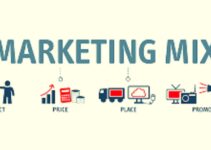Businesses and companies nowadays are using the word brand. In fact, we’re living in a world of giant brands that have dominated the global market. Today, we’ll discuss what is a brand; its types, elements, and benefits.
What is a Brand?
The term “brand” is a concept of business and market that allows people to recognize a particular individual, product, or company. Brands have got intangible characteristics that you cannot see or touch. They help shape the perception of people towards particular individuals, products, and companies.
Generally, brands employ recognizing markers to develop their brand identities in the marketplace. They offer great value to a particular individual or a company, and it provides a great competitive edge to companies in the industry. However, the brands of many businesses and companies apply for trademarks to achieve legal protection.
Explanation – Detailed
The brand is such an intangible asset that helps people to recognize the products/services of the specific company. It is significant when companies differentiate themselves from their competitors when they’re offering similar products. For instance, many brands are offering ibuprofen, and Advil is one of them. The company focuses on the Advil brands name to distinguish itself from its competitors, and you can call it brand equity.
Often people baffle brands with the identifying marks, slogans, and logos of various companies. They all are distinct terms, but people use them interchangeably. However, they’re marketing tools that companies use for the promotion of their products/services. They develop a unique brand identity when using it together. A successful marketing campaign could help people remember the brand name of the company.
It’s a highly valuable asset of the company. Many companies refer to their brands as an inseparable entities, and they both are the same thing. It has become significant for them to legally protect their brands in the form of getting a trademark (exclusive ownership). The registered trademarks stop others not to selling your product without your permission.
Types of Brands
Some of the main types of a brand are as follows;
Service Brands
It’s a type of branding that you can apply to all types of intangible services. Often, it requires a lot of creativity, because you cannot show services like any other type of physical or tangible product.
Product Brands
It’s a form of branding that also goes by the name of merchandise branding. It comprises marketing and promotion of your one particular product. Branding of products would require a lot of marketing research, and you have to carefully choose the particular target audience.
Personal Brands
As discussed earlier that branding isn’t only for businesses and companies; people can also establish their own brands by using social media. It helps them to further promote their brands in the market. However, it comprises conducting meet-and-greets, sharing videos and images, and posting regularly on social media platforms.
Corporate Brands
As the name implies, corporate branding is only for corporations and companies that run marketing and promotional campaigns to gain a competitive edge over their competitors. They have to make a lot of important decisions to accomplish such a position like their values, target market, mission, and pricing.
Elements of a Brand
Some of the main elements of branding are as follows;
Brand Compass
Brands compass is the summarizing truth about the brands in terms of what the company has put into the strategy phase. It gives the direction to your company and tells where it’s heading; and it comprises strategic objectives, values, mission, vision, and purpose. The mission of the company would outline how you plan to objectives and vision.
Brand Archetype
Brands archetype provides you a unique strength in the form of shared human experiences. The idea of archetype has taken inspiration from Joseph Cambell, Jeung, Freud, and Plato. However, it allows you to tell a powerful store about your brands that would connect with the audience.
Brand Personality
Brands personality comprises unique behavior and characteristics, and it shows how your brand looks and sounds from the other’s point of view. It is the main reason for developing loyalty and high personal relationship with the customers.
Competitive Edge
It’s critical to define the competitive advantage of brands, and you have to know how a company has differentiated itself from the competitors. For instance, speeds of delivery service or pricing are the competitive advantages over competitors.
Brand Promise
Brands promise is the honest pledge that you make to your customers. For instance, Volvo has made the pledge of providing the safest cars to its customers decades ago. A company could describe its promise in many ways beyond, social media, advertisement, messaging, and tagline.
Visual Identity
Visual identity comprises adding the visual experience for differentiation and recognition. It could be in the form of iconography, typography, color scheme, logo, etc; and it is like a stamp that you make on the world as an identity. It comprises an aesthetic system full of meaning that has the power to talk to the world.
Verbal Identity
Verbal identity is a combination of words and messaging that distinguishes your brand and makes it recognizable to your audience. It comprises brand messaging, brand story, brand voice, and tagline. Verbal identity would humanize brands in such a way that customers could recognize them.
Benefits of a Brand
Some of the main benefits of a brand are as follows;
Good Impression
Successful branding helps companies to send a good impression. They can send the message across in order to evoke emotions among your target audience. Customers develop a unique connection with their favorite companies, and it helps companies to establish a loyal database of customers. They also rely on existing customers to attract new ones.
Trust & Credibility
Branding helps companies to establish trust and credibility. It’s because customers would do more shopping from such brands that they already know and trust. However, it provides brands a unique competitive edge over competitors.
Launch New Products/Services
Branding encourages businesses and companies to launch new products and services in the market. Since the company has got a loyal database of customers, they trust brands and have got a unique connection with them. They would buy the latest product offered by the company, even if it is more costly than the previous version.
Conclusion: What is a Brand? Types, Elements, Benefits
After an in-depth study of what is a brand; its types, elements, and benefits; we have realized that branding is significant for the growth and promotion of businesses and companies. If you’re planning to build one, then you should keep in mind the abovementioned types and guidelines.

Ahsan Ali Shaw is an accomplished Business Writer, Analyst, and Public Speaker. Other than that, he’s a fun loving person.


